Maasai Mara National Reserve is found in Narok country in Kenya. The reserve lies along the Great Rift Valley and covers an area of about 1,510 square kilometers. The Masai Mara is an extension of the greater Serengeti (25,000 square kilometers in size) eco-system in Tanzania. The Serengeti National Park is found in the southern part of the reserve, Masai pastoral communities to the north/east and the Oloololo/Siria escarpment to the west. The reserve is named in honor of a tribe that has lived in the area for hundreds of years. In the local Masai language the word “Mara” means “spotted” and refers to the short trees and bushes that dot the landscape.
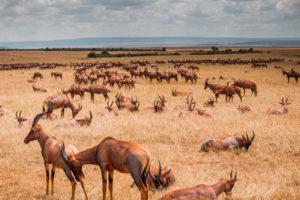 The Masai Mara National Reserve is part of a wider Mara ecosystem that also includes the Mara Triangle, other Maasai Conservancies like Kerinkani, Kimintet, Koiyaki, Lemek, Maji Moto, Mara North, Naikara, Ol Chorro Oirowua, Ol Derkesi, Olkinyei, Oloirien and Siana. Three major rivers drain the reserve – The Talek river, Sand river and the more famous Mara River. Much of the reserve consists of open grasslands, seasonal rivers and acacia trees. The Maasai Mara Reserve receives two distinct rainy seasons. There are the long rains that fall between April to May and the short rains of November to December.
The Masai Mara National Reserve is part of a wider Mara ecosystem that also includes the Mara Triangle, other Maasai Conservancies like Kerinkani, Kimintet, Koiyaki, Lemek, Maji Moto, Mara North, Naikara, Ol Chorro Oirowua, Ol Derkesi, Olkinyei, Oloirien and Siana. Three major rivers drain the reserve – The Talek river, Sand river and the more famous Mara River. Much of the reserve consists of open grasslands, seasonal rivers and acacia trees. The Maasai Mara Reserve receives two distinct rainy seasons. There are the long rains that fall between April to May and the short rains of November to December.
The most visited part of the Maasai Mara to the East is managed by the government of Narok County (known as Narok County Council) while the Mara Triangle to the west is administered by the Mara Conservancy. The outer areas of the reserve where most of the local Masai communities live is administered by elected Masai leaders. The Mara Triangle is where most of the migrating wildebeest enter the Maasai Mara National Reserve. You may be interested in our 2 Days Maasai Mara safari package.
History of the Maasai Mara National Reserve
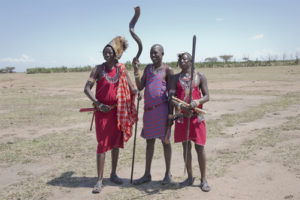 The Maasai Mara National Reserve was established as a wildlife sanctuary in 1961. At that time it covered only 520 square kilometers and included the Mara Triangle. In the same year, the sanctuary was extended to the East and turned into a game reserve covering an area of 1,821 square kilometers. In 1974, the game reserve became a National Reserve but with 159 square kilometers returned back to the local Masai Community. By 1984, the overall size of the reserve had reduced to 1,510 square kilometers after more land was returned to the local Masai community.
The Maasai Mara National Reserve was established as a wildlife sanctuary in 1961. At that time it covered only 520 square kilometers and included the Mara Triangle. In the same year, the sanctuary was extended to the East and turned into a game reserve covering an area of 1,821 square kilometers. In 1974, the game reserve became a National Reserve but with 159 square kilometers returned back to the local Masai Community. By 1984, the overall size of the reserve had reduced to 1,510 square kilometers after more land was returned to the local Masai community.
Who are the Masai? The Masai are one of Africa’s most famous tribal groups. They are a proud people who have remained independent for centuries. The Masai live in south, central and northern parts of Kenya but with groups in the Northern parts of Tanzania (Serengeti plains). The Masai are known for 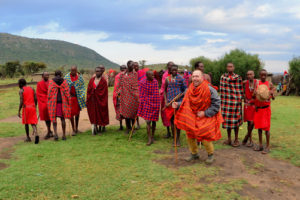 their tall stature, traditional shuka costumes and eye-catching beads. They still believe and practice their ancient traditions/customs. Like the Karamojong in Uganda, the Masai depend on their domestic livestock for almost everything. In fact, the Masai believe that all cattle in the world belongs to them. All that is not in their possession was at one time stolen from them. In the past, this belief in global ownership of cattle caused many tribal wars as they attempted to repossess stolen cattle from their neighbors. Cattle rustling only stopped with the intervention of the government. It is important to note that in the past governments attempted to drive the Masai people out of the reserve by force but a decision was made to let them live harmoniously with wild animals in sections of the reserve.
their tall stature, traditional shuka costumes and eye-catching beads. They still believe and practice their ancient traditions/customs. Like the Karamojong in Uganda, the Masai depend on their domestic livestock for almost everything. In fact, the Masai believe that all cattle in the world belongs to them. All that is not in their possession was at one time stolen from them. In the past, this belief in global ownership of cattle caused many tribal wars as they attempted to repossess stolen cattle from their neighbors. Cattle rustling only stopped with the intervention of the government. It is important to note that in the past governments attempted to drive the Masai people out of the reserve by force but a decision was made to let them live harmoniously with wild animals in sections of the reserve.
Tourism and Wildlife in the Masai Mara Game Reserve
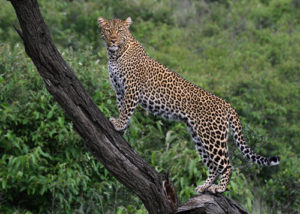 The Maasai Mara National Reserve is one of the most visited and well-known wildlife conservation areas in Africa. It is famous for hosting the big 5 mammals – Elephants, Leopards, Rhinos, lions and buffalo. The Masai Mara is the only wildlife reserve/national park with an indigenous black rhino population. There was a time when hundreds of rhinos roamed freely in the park but starting from the 1970’s to early 1980’s poachers killed most of them. Only 15 individuals were left and these have grown in number but never to the where it was before. Despite the slow increase in black rhino numbers, it is still the best places to see the mammals in Africa.
The Maasai Mara National Reserve is one of the most visited and well-known wildlife conservation areas in Africa. It is famous for hosting the big 5 mammals – Elephants, Leopards, Rhinos, lions and buffalo. The Masai Mara is the only wildlife reserve/national park with an indigenous black rhino population. There was a time when hundreds of rhinos roamed freely in the park but starting from the 1970’s to early 1980’s poachers killed most of them. Only 15 individuals were left and these have grown in number but never to the where it was before. Despite the slow increase in black rhino numbers, it is still the best places to see the mammals in Africa.
Apart from the big 5, the reserve is also home to grazers like duikers, impala hartebeests, giraffes, roan antelopes, zebra, topi, wildebeest and Thomson’s gazelles. The overall number of some of these antelopes vary depending on the season because of the great migration from the Serengeti and Loita Plains. The reserve is also home to crocodiles, Hippopotamus, jackals, cheetahs, hyenas, servals and foxes. The Maasai Mara is home to over 470 species of birds including vultures, secretary birds, ostriches, marabou storks, long-crested eagles, lilac-breasted roller, hornbills, crowned cranes and African pygmy-falcons.
Which are the main activities in Masai Mara Game reserve? The top activity in the Masai Mara National Reserve is the standard game drive to see the animals and birds we have mentioned above. On a 3 Days Masai Mara safari, one 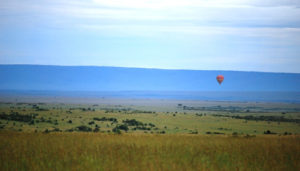 can take part nature/bush walks, birding, cultural experiences (with the Masai), hot air ballooning and photographic tours. Most tourists prefer to visit the park during the great Wildebeest Migration. This is when over 1.7 million Wildebeest, 500,000 Zebras and 200,000 other grazers migrate from the Serengeti National Park in Tanzania to the Masai Mara in search of fresh pasture. The grazers have to pass through crocodile-filled rivers and big cat territory. This great migration offers an excellent opportunity to witness the battles between predator and prey.
can take part nature/bush walks, birding, cultural experiences (with the Masai), hot air ballooning and photographic tours. Most tourists prefer to visit the park during the great Wildebeest Migration. This is when over 1.7 million Wildebeest, 500,000 Zebras and 200,000 other grazers migrate from the Serengeti National Park in Tanzania to the Masai Mara in search of fresh pasture. The grazers have to pass through crocodile-filled rivers and big cat territory. This great migration offers an excellent opportunity to witness the battles between predator and prey.
The wildebeest migration starts in July and ends around October. Although the time of the migration provides the best safari experience, it also a time when the Reserve is crowded with tourists. If you want a more private safari, you need to go during the rainy seasons (November and April to May). One doesn’t have to visit during the migration season because the Reserve has resident wildlife which allow for wildlife viewing throughout the year. If you are traveling during the great Migration, you can choose to go to the private ranches or conservancies where you can observe the migration without too much of the crowds.
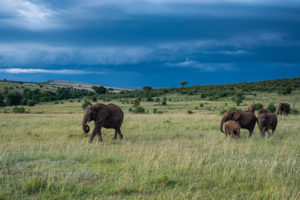 The conservancies are destinations in their own right. They also offer abundant wildlife and spectacular scenery but are managed by the Masai people. These private concessions can offer activities that are not possible in the main reserve such as night game drives, camping in the bush and walking safaris under the guidance of the Masai warriors.
The conservancies are destinations in their own right. They also offer abundant wildlife and spectacular scenery but are managed by the Masai people. These private concessions can offer activities that are not possible in the main reserve such as night game drives, camping in the bush and walking safaris under the guidance of the Masai warriors.
How much does it cost to enter Maasai Mara National Reserve? Management of the main reserve charge an entry fee of $70 for foreigners residing within the reserve and $80 for those staying outside the Reserve. A child pays $40 as entry fees. East African citizens pay less and in Kenyan shillings. It is important to note that most travelers to the Masai Maraa National Reserve combine it with visiting other destinations in Africa. That is why we have the 7 days Masai Mara and Gorilla trekking safari Package in Rwanda and the 8 days gorilla and Masai Mara tour in Uganda. You might also find our article about the Victoria Falls Interesting.
Threats and Research Activities
A study conducted by The International Livestock Research Institute (ILRI) and funded by the World Wide Fund for Nature (WWF) between 1989 and 2003 found that the park had on average lost about 70 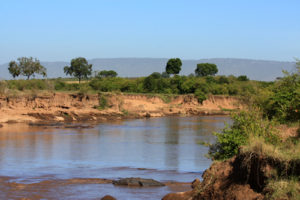 percent of the population of grazers (giraffes, impala, hartebeest and the common warthog). The loses were blamed squarely on the high population density which has increased human settlements in/around the reserve. As the number of domestic animals increase within the reserve, there is competition for space leading to human and wildlife conflicts. There have been countless cases of wildlife being poisoned by communities living within the greater reserve. Poaching is also prevalent especially with population explosion and mushrooming settlements within the greater reserve. Human and wildlife conflicts are currently being mitigated through community awareness campaigns by organizations like the Mara Elephant Project. The government also compensates individuals who lose their animals and farm products to wildlife.
percent of the population of grazers (giraffes, impala, hartebeest and the common warthog). The loses were blamed squarely on the high population density which has increased human settlements in/around the reserve. As the number of domestic animals increase within the reserve, there is competition for space leading to human and wildlife conflicts. There have been countless cases of wildlife being poisoned by communities living within the greater reserve. Poaching is also prevalent especially with population explosion and mushrooming settlements within the greater reserve. Human and wildlife conflicts are currently being mitigated through community awareness campaigns by organizations like the Mara Elephant Project. The government also compensates individuals who lose their animals and farm products to wildlife.
How to get There
The Masai Mara can be accessed by air or road. Most travelers go into the Reserve as part of an all-inclusive tour package by a local tour operator. The journey often starts from Nairobi in a standard tour van/Land Cruiser or minivan. Apart from providing the tour vehicle, the company also assigns clients a full-time driver for the entire safari. The company driver also doubles as a tour Guide with vast knowledge about the reserve and where to search for the animals. A tour company will also arrange for 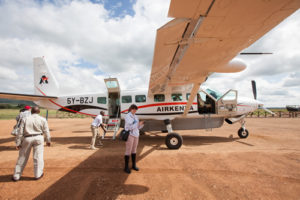 activities (including entrance fees) and book the accommodation facilities. The journey from Nairobi to the Masai Mara takes 3 hours but can go to 4 depending on the location of your hotel and the part of the Reserve. If you want to save some money or have more control of your safari, you choose to organize everything on your own. There are matatu or buses going all the way to Narok country from Nairobi at an affordable cost.
activities (including entrance fees) and book the accommodation facilities. The journey from Nairobi to the Masai Mara takes 3 hours but can go to 4 depending on the location of your hotel and the part of the Reserve. If you want to save some money or have more control of your safari, you choose to organize everything on your own. There are matatu or buses going all the way to Narok country from Nairobi at an affordable cost.
The second way to get to the Masai Mara is by air. It is the most convenient and comfortable way to get to the reserve if you are in the country for a workshop, business trip or conference. There are countless private airstrips owned by lodges in the area. Safarilink and Air Kenya organize two daily flights to the reserve at a reasonable cost. A tour operator can also help with local flight reservations so that you begin the game drive as soon as you land. The Masai Mara has a network of dirt roads leading to almost every part of the reserve.

Thanks for the information.
We wish to tour Kenya and go to places like Mara, Amboseli, Nakuru and Naivasha.
Is it possible to see all these places in an all-inclusive tour of $1200 (±$100) in 7-9 days?
Can you suggest any good tour operator(s) who can show us around these places at this price?
I am interested in a 5 to 6 days tour to Masai Mara in July